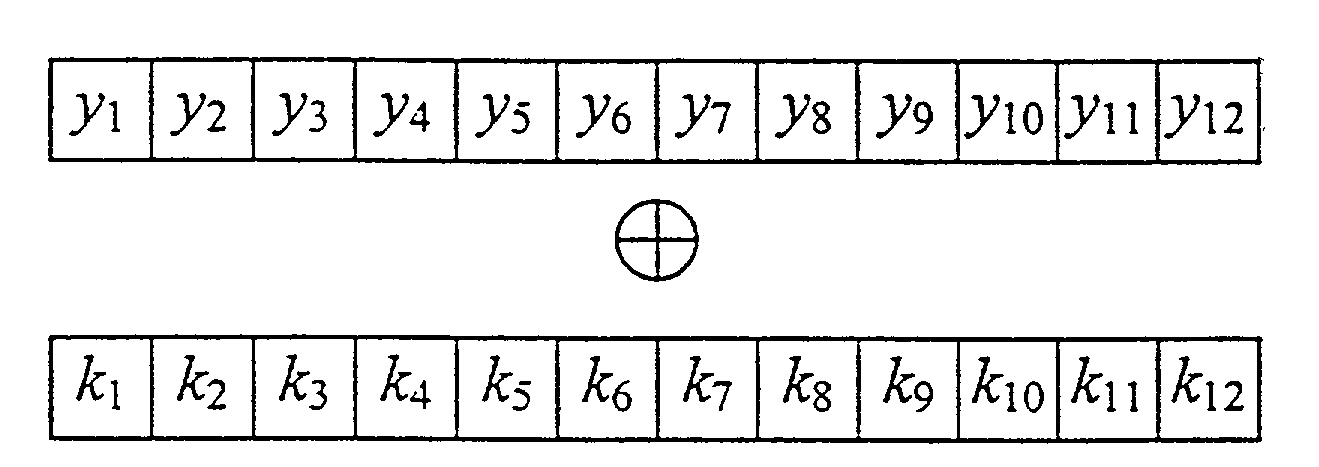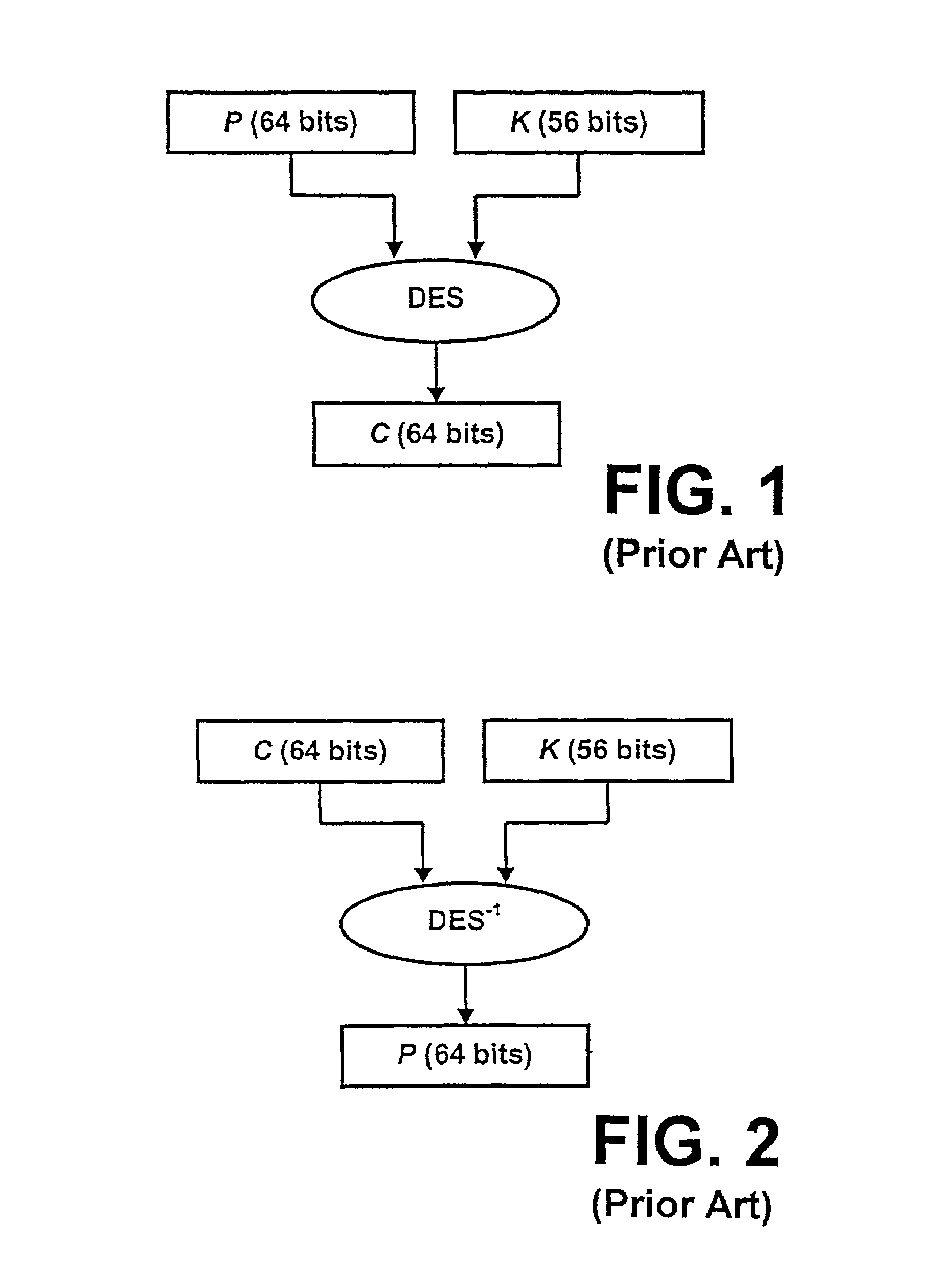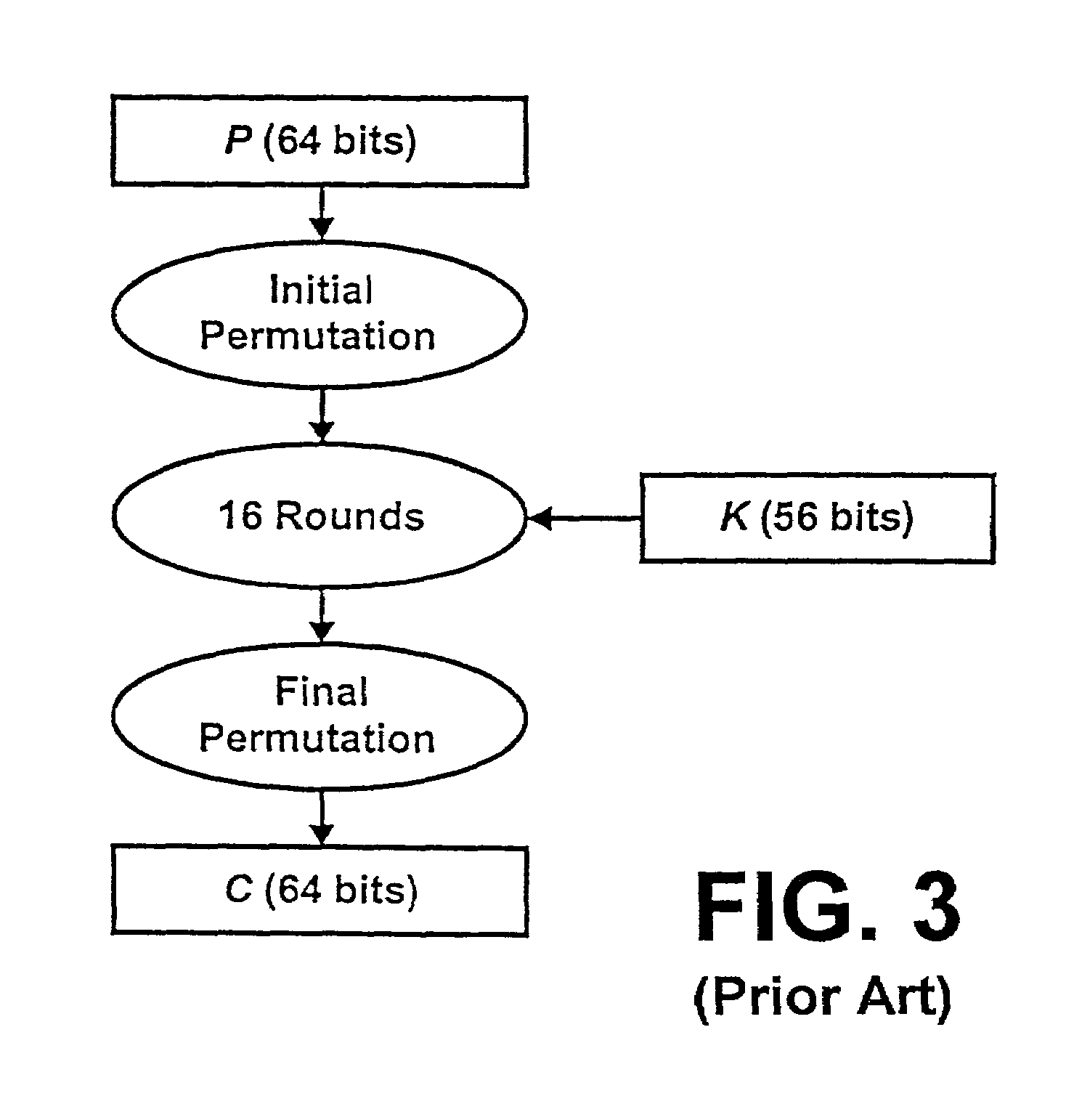Method of implementing the data encryption standard with reduced computation
a data encryption and computation technology, applied in the field of encryption and decryption, can solve the problems of inability to recover original data with a reasonable amount of time and effort, outsiders' inability to easily discover the secret key k, so as to reduce the number of instructions and reduce the length
- Summary
- Abstract
- Description
- Claims
- Application Information
AI Technical Summary
Benefits of technology
Problems solved by technology
Method used
Image
Examples
Embodiment Construction
[0033]We begin by describing a new indexing scheme for the large SP-boxes. We refer to the new input into the second large SP-box as B. The variable bi represents the ith bit of B where b1 is the least significant bit and b12 is the most significant bit. B is calculated as follows:
[0034]
x8x9x10x11x12x13x14x15x16x1700⊕k13k14k15k16k17k18k21k22k23k24(k19⊕k17)(k20⊕k18)
[0035]The leftmost (i.e., least significant) 10 bits of B consist of all 12 bits of A except
(x13⊕k20) and (x12⊕k19). We can infer the values of (x13⊕k20) and (x12⊕k19) by logically XORing bits of B together. By the properties of the XOR operator:
[0036](b12⊕b6)=(k20⊕k18)⊕(x13⊕k18)=(x13⊕k20)[0037](b11⊕b5)=(k19⊕k17)⊕(x12⊕k17)=(x12⊕k19)
[0038]From these expressions, it can be concluded that B contains as least as much information as A. We can therefore obtain the correct output from the second large SP-box using the input B (rather than A) if we rearrange the large SP-box entries. This static rearrangement of SP-box entries occ...
PUM
 Login to View More
Login to View More Abstract
Description
Claims
Application Information
 Login to View More
Login to View More - R&D
- Intellectual Property
- Life Sciences
- Materials
- Tech Scout
- Unparalleled Data Quality
- Higher Quality Content
- 60% Fewer Hallucinations
Browse by: Latest US Patents, China's latest patents, Technical Efficacy Thesaurus, Application Domain, Technology Topic, Popular Technical Reports.
© 2025 PatSnap. All rights reserved.Legal|Privacy policy|Modern Slavery Act Transparency Statement|Sitemap|About US| Contact US: help@patsnap.com



